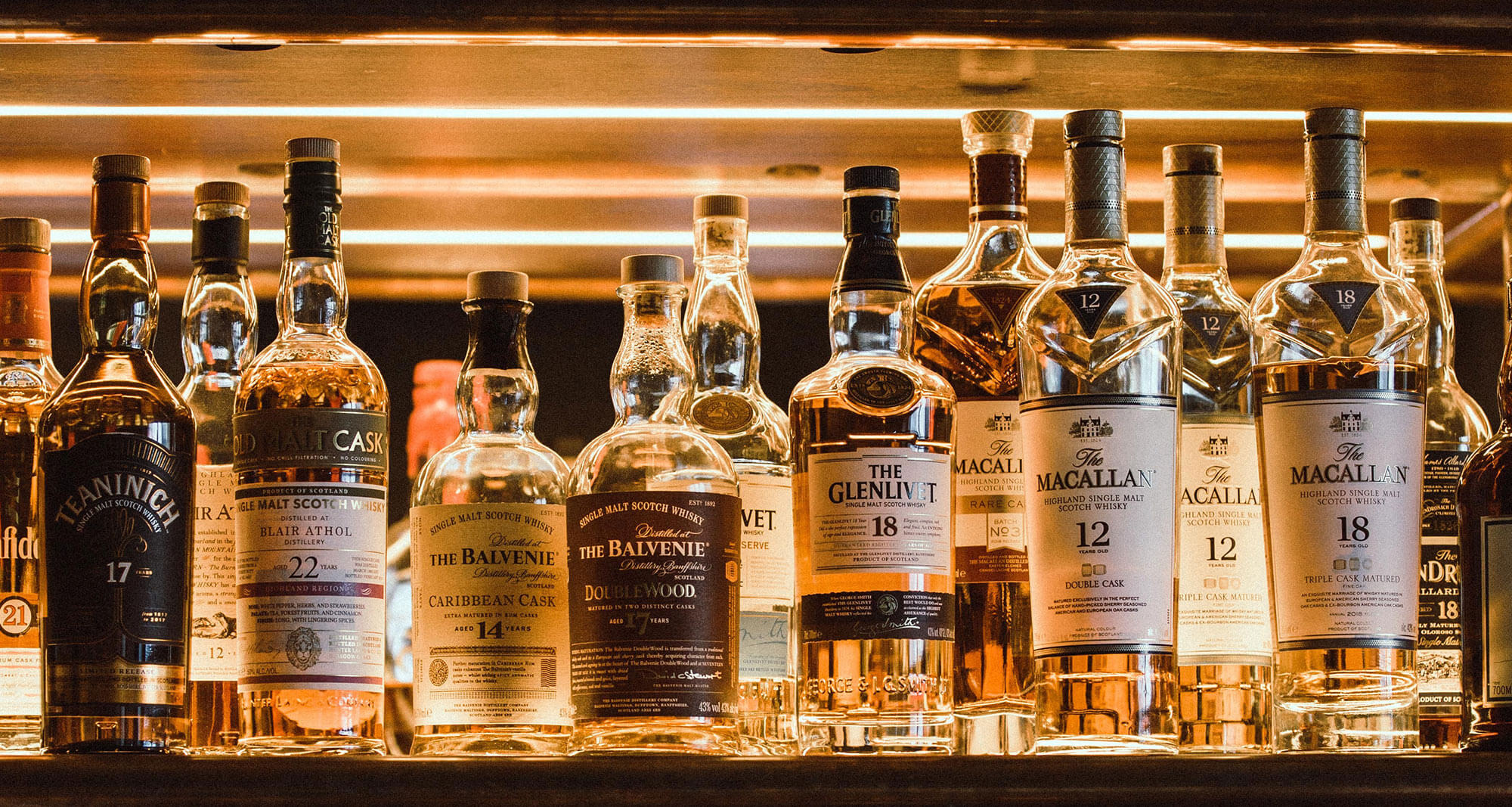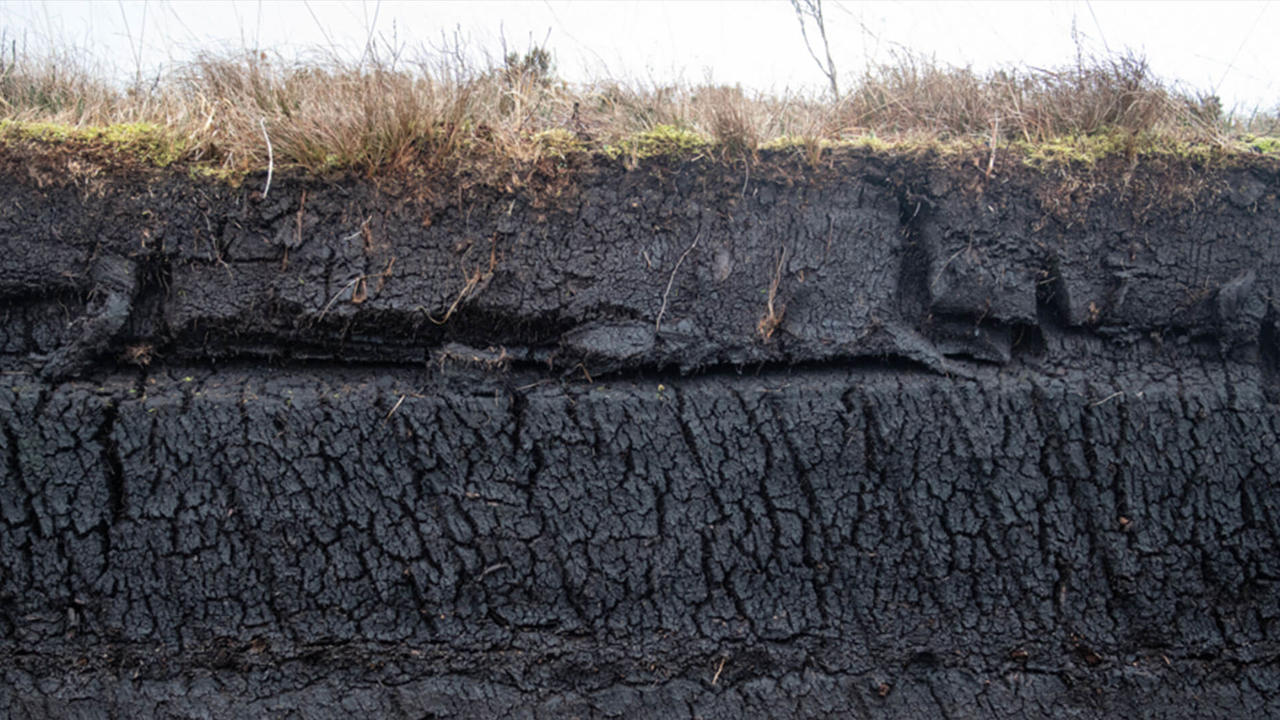Spring marks the beginning of peated whisky production. For whisky producers, April is when they start to cut the peat for use in production.
On this occasion, however, I have enlisted the help of a colleague who lives on the island of Islay to help with this post. Jackie Thomson has been managing the Ardbeg Visitor Centre for nearly 25 years and is an expert on peat. I couldn’t think of a better person to explain everything about the relationship between peat and whisky.
Over to you Jackie…
What is peated whisky?
Peated whisky or 'peaty' whisky is one of the more unique styles of whiskies out there. The grain of the whisky is infused with the peat. This happens very early in whisky production, during drying, to fully absorb the peaty notes.

What is peat?
Peat is sliced out of the earth with special cutting tools around April time. It’s a laborious process of cutting, laying, stacking and drying the peat, before use.
Peat covers 1.5 million square miles of surface area across the world.
Here’s the equation to make peat:
Plants + heather + seaweed + bones/feathers/water - oxygen and pressure + time = peat.
Simple, no?
Check out the piece on barley harvesting season, explaining what is whisky made from.
How is peated whisky made?
The process is very simple really.
After the barley grain is soaked in water to partially germinate, distillers stop the process by exposing it to the peat fire. This is where the peat is used.
Within the peat smoke there are ‘phenols’, which the malted barley absorbs during drying. How peaty a whisky is, is completely determined by the time exposed to the phenols when drying. Damp malted barley is usually exposed for 30 hours to dry and infuse.
Get a full run down on making whisky with oak here and in our article on ‘what is whiskey’.

A short history of peat
Peat was traditionally the fuel that kept island homes warm throughout long, cold winters. Families, neighbours and sometimes whole villages would go out to the peat banks together and cut up the necessary chunks.
Peat is always accumulating underneath us. As the climate changes, the plants react in response to this. When peat bogs amass, it preserves a record of these agronomical changes. On Islay, we can stand on the surface of a peat bog and extract a core that takes us back through the centuries. By examining each layer, we can map out the climate history.
Have a read of the history of Scotch in our 'what is Scotch' post. You'll find history, production and so much more to discover all in one place.
Where do you find peat?
Peat isn’t exclusively Scottish. Much of northern Europe, from Scotland to Siberia, has peat deposits. It can also be found elsewhere in parts of North America, Africa, Australia and New Zealand.
Where do they make peated whisky?
Peated whisky is made all over the world. Scottish single malts are famed for doing it well but not every Scotch whisky is peaty.
However, peat can be found in other areas of the world too. Some whiskies from Japan and New Zealand use peat in the whisky making process. It can even be found in the notes of Irish and American whiskies too.
How does peat grow?
Peat forms in wetland conditions, from a build-up of partially decayed vegetation. The constant moist conditions starve microbes of oxygen needed to fully decompose the vegetation. Vegetation like moss, grass, heathers and seaweed all add to the compressed peat underground, forming peat bogs.

Which tools do you need to cut peat?
To cut peat you need to you a peat spade, called a ‘fal’. Peat tools are prised possessions often handed down from generation to generation. To cut underneath the turf, you would use a tool called a ‘dulchipe’.
To cut peat effectively it must be done methodically. The top turfs of the peat need to be placed back on the ground after extracting the softer layers. Cutting into the banks is arduous work. These banks are hard cracked after 10 months of brutal weather conditions.
Once into the soft layer, called the ‘catotelm’, the peat is blocked and stacked, left to the elements. After six to eight weeks, the bricks dry and shrink, becoming lighter and ready to burn. Once in this condition, the bricks give off ‘peat reek’. This is wonderful, earthy aroma that fills the peat bogs after cutting.

How does peat influence whisky flavour?
When burning peat, chemicals in the smoke infuse the malted barley with rich, smoky flavours. A typical Islay peated whisky can have a range of notes including cloves and smoky meats.
The content of peat, too, influences the flavour of peated whiskies. Islay peat contains marine vegetation, like seaweed, which produces a fresh, salty flavour in the whisky notes. Other types of vegetation, like mosses, can infuse the whisky with moist notes.
'Peatiness' refers to the amount of peat present in a whisky. It's measured in parts per million (PPM). Distilleries require their own specification of PPM in the malted barley. A mid-peated malt like Talisker has 20 PPM, whereas Ardberg is a heavily peated whisky with 55 PPM.
Want to know how to drink whisky from a certified whisky expert? Check out our guide.
Peaty vs smoky
Peaty and smoky are two similar flavours but are actually very different.
Peaty is a tar-like, medicinal, bitter flavour. It is encompassed by an overall deep earthy flavour. Single malt Scotch whisky usually balances this flavour out nicely, due to the sweet, malted barley.
Smoky is a flavour of ashy or burning notes. It can taste very similar to either burning tobacco or a bonfire. This taste is less organic and more like charcoal.
A quick mention. A smoky whisky does not have any peaty notes. A peated whisky may have some smoky notes, however.
The taste of peat is a lot like marmite. The opinions, that is. You either love it or loathe it. Due to this subjectivity, people taste peat slightly differently.
Learn how to taste whiskey like an expert with our guide here.

5 best peated whiskies
Don’t know which peaty whisky to get? Here are some recommendations for you…
- Talisker 18 Year Old – This beautiful amber whisky will give you citrus flavours mixed with tobacco. As a medium peated whisky, it balances the flavours eloquently.
- Laphroaig Caerdias – Laphroaig are one of the best at making peated whiskies. Caerdias enriches your mouth with deep notes of spice and smoke.
- Laphroaig Lore – This is a seaweedy single malt, peaty Scotch, that leaves a chocolately taste on the palate. The smoky flavour plays nicely with the vanilla aromas.
- Peat Monster – Produced by Compass Box distillery, this popular single malt whisky is an Islay whisky. It has notes of the sea and burned driftwood in an aromatic smokiness. A light, creaminess means it’s easy to drink.
- BenRiach – This peated whisky transports you to country orchards. Its apple and pear-like flavours elevate the earthiness. You won’t be disappointed with this refined Scotch.
Take a look at our guide on whisky prices to find your whisky match.

Shortie’s Dirty Daiquiri Recipe
Here is a refreshing, peat-inspired cocktail bursting with earthy, fruity and creamy notes. Be sure to check out the other whiskey cocktail recipes, for even more great recipes.
Ingredients:
- 50ml Ardbeg Ten Years Old
- 20ml cloudy apple juice
- 20ml fresh lime juice
- 10ml vanilla syrup
Method:
- Step one: Pour the Ardbeg Ten Years Old, apple juice, lime juice and vanilla syrup into a shaker filled with ice.
- Step two: Shake for roughly 30 seconds to mix all the ingredients nicely.
- Step three: Strain into a chilled glass or teacup.
Interested in more cocktails? Read our 'what is a cocktail' page for everything cocktail related.
Don't know what food goes with whiskey? This guide will help you find your perfect match...
Want to make the 'Shortie' behind the bar professionally? Take a look at our EBS Bartender Courses.

